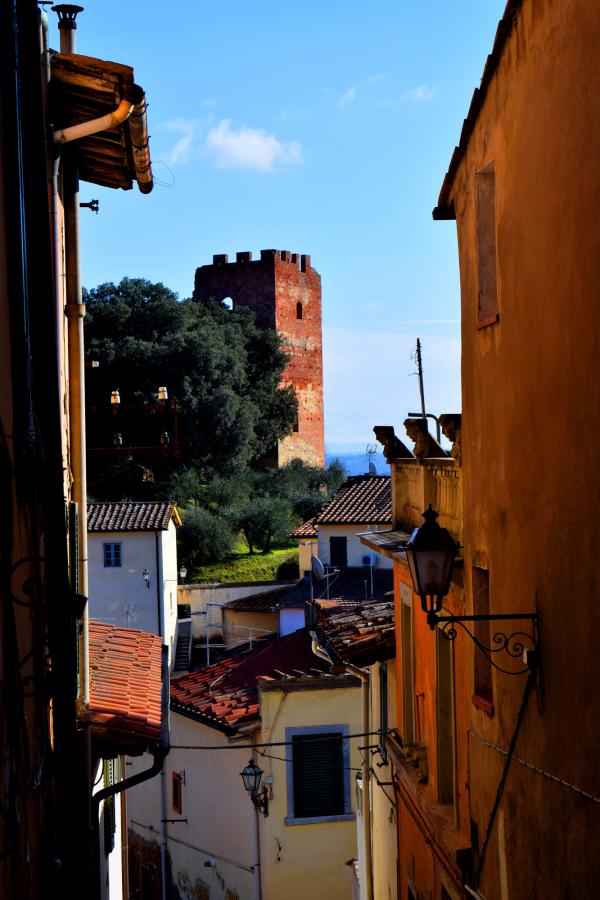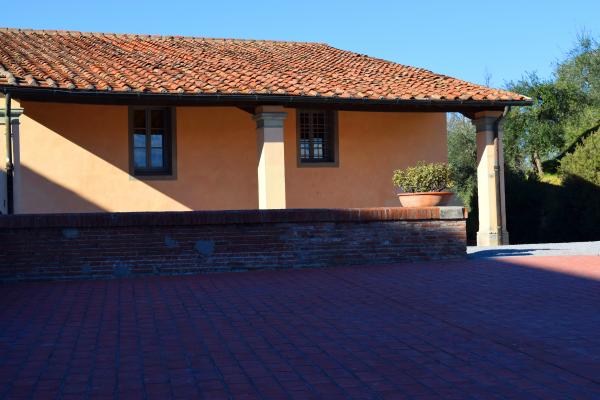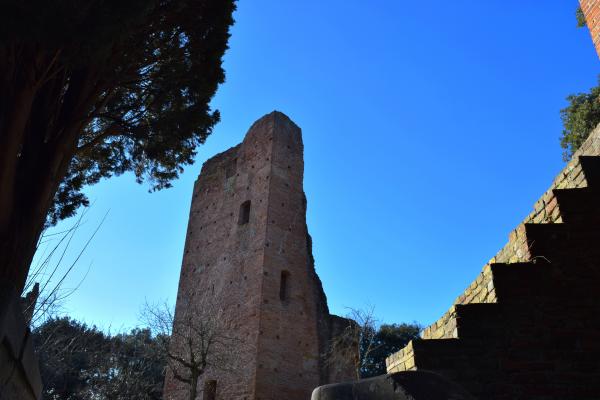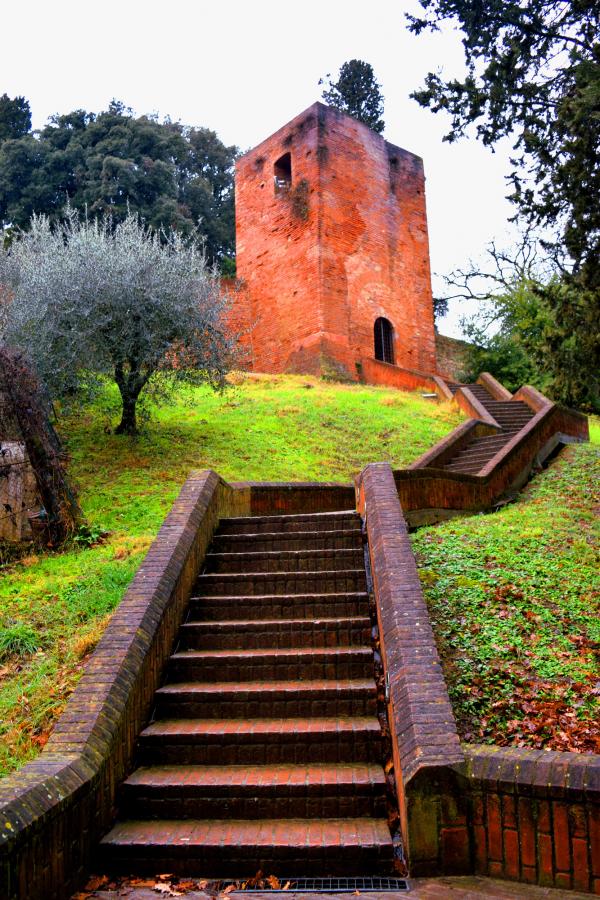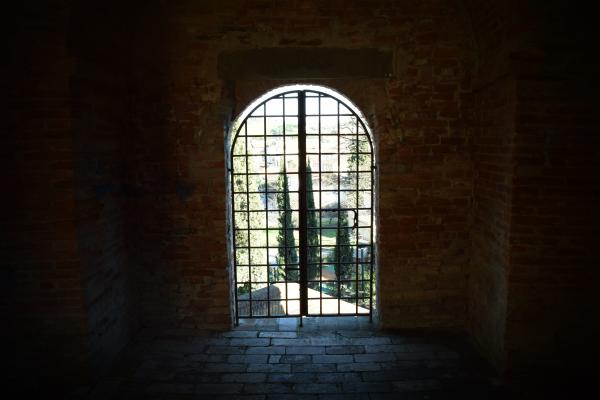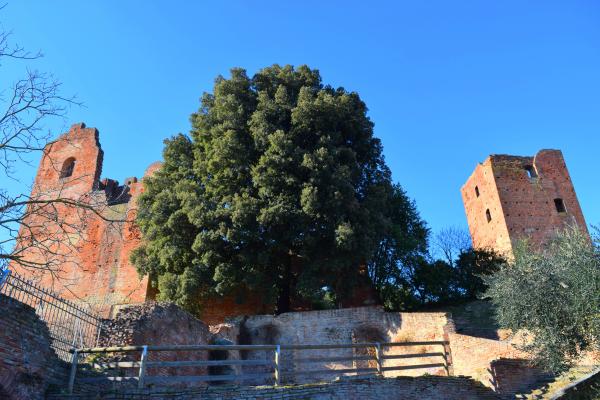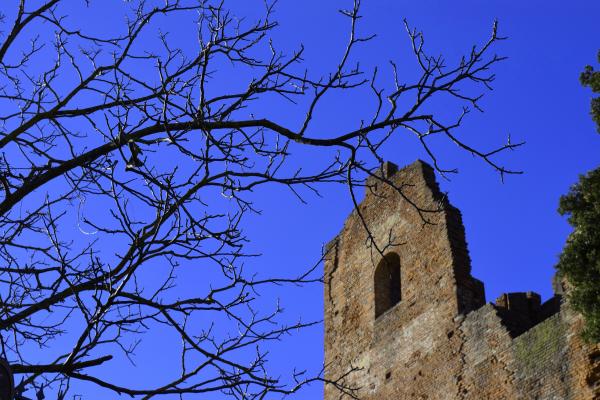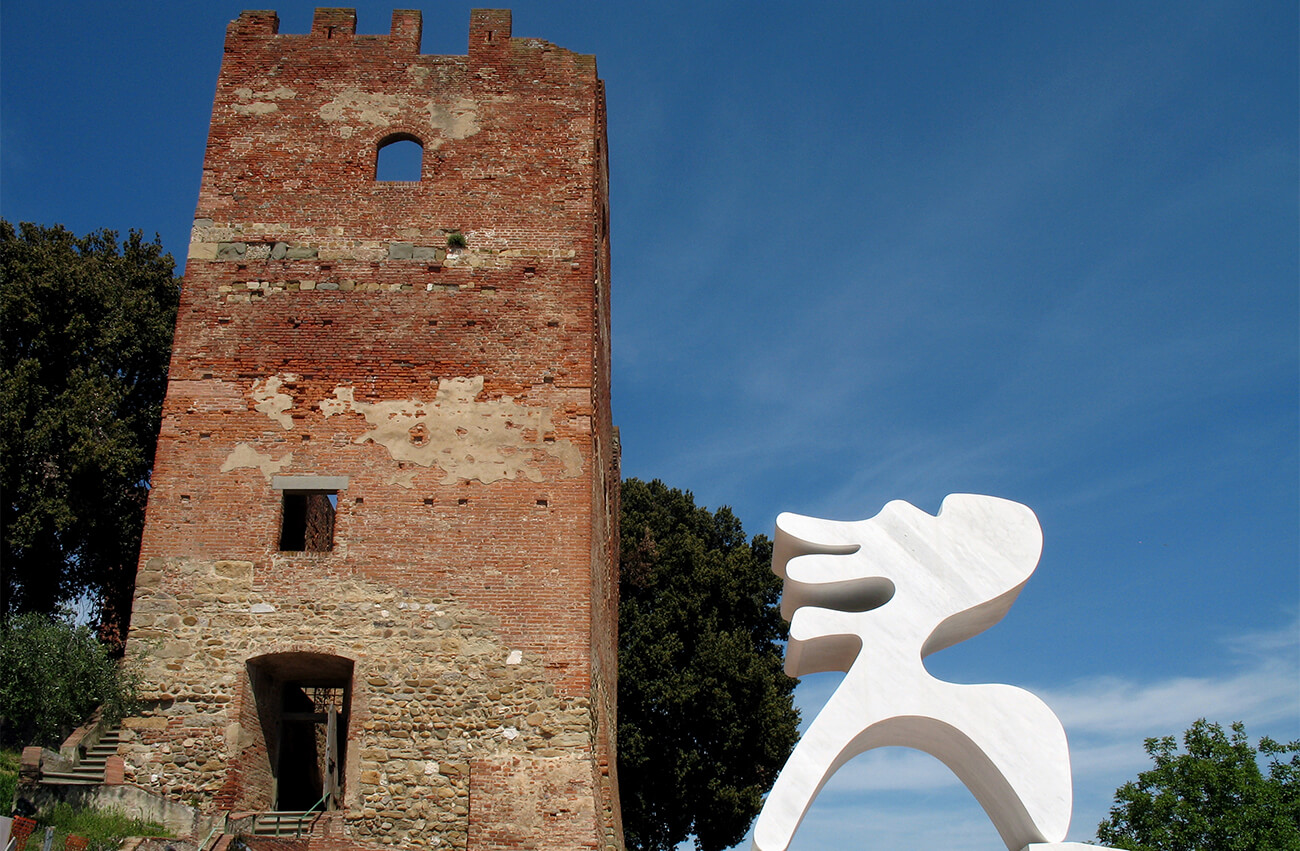
THE CORSINI PARK
The suggestive Corsini Park, with its ancient buildings, is located in the historic center of the town. The area includes the palace, the medieval towers, the park and a series of buildings joined by common areas.
The palace and the contiguous fortified area of the fortress – in the 11th century already the seat of the Cadolingian castle of Salamarzana – initially experienced different and separate events. The first functional unification of the two areas took place at the beginning of the fifteenth century when the buildings and fortifications came under the control of wealthy Florentine families. In 1460 the building, formerly the administrative center of a farm, was bought by Giovanni di Cosimo dei Medici, to then pass to his nephew Lorenzo the Magnificent and finally to the hospital in Altopascio. Important renovations date back to the Medici ownership phase, which gave the building its current appearance. In 1643 the farm was bought by the Corsini marquises who in 1864 also became owners of the Rocca. Since 1981, the entire complex has returned to municipal property.
The museum, the municipal library with the historical archive, the La Tinaia Auditorium (seat of the Sottosopra Youth Center), the “Il Frantoio” Performing Arts Center and the former lemon house are located within the area.
Panoramic point of the Torre di Mezzo
In December 2021 the panoramic point on the top of the Torre di Mezzo was inaugurated, born from the insertion inside the structure of an iron staircase and some balconies that allow a view from above of the Arno valley. The project, definitively approved in 2018, was co-financed by the Region and the Municipality of Fucecchio and is located along the route of the Via Francigena (Fucecchio is the leading municipality of the central-southern Tuscan aggregation) enhancing the ancient route of pilgrims. The intervention has not only a tourist value but also has the purpose of preserving one of the ancient towers of Parco Corsini in the best possible way, through seismic consolidation.
The Torre di Mezzo after a few centuries returns, in a certain sense, to its original function: once a fundamental sighting point for the defensive strategies of the Rocca Corsini and the Castle of Salamarzana, today a panoramic point to admire the Arno valley look towards the Rocca di Federico II in San Miniato.
THE PALACE
The building, which is accessed from Piazza Vittorio Veneto, is on three floors and ends with an elegant side loggia supported by brick columns. Built on the oldest castle walls, the building included a door that opened onto the “piazzetta” (now Piazza Niccolini) and that connected directly to the main villages. Inside the building there are still traces of previous medieval constructions, being formed by at least two bodies brought together during the renovations of the fifteenth century. In particular, on the first floor, a decorated terracotta arch, a fragment of a fresco from the 14th-15th century and some pictorial decorations (landscapes and frames) made by Stefano Fabbrini in the second half of the 18th century are evident. Two wings are connected to the main building, formed by the rooms once used for the services of the Farm and which now house the Library, the Historical Archive and the Civic Museum.
THE PARK AND THE ROCK
From the palace you enter the park, where the towers of the Rocca dominate a forest of oaks, holm oaks and cypresses. The fortification, commissioned by the Florentines in 1322, served to play a role of control over the important Fucecchiese crossroads and the Arno bridge, as well as to keep the restless local population in check by repressing their frequent turmoil.
Destined for military use up to the entire fourteenth century, the fortification lost its original strategic importance in the early fifteenth century, after Florence, having conquered Pisa, consolidated its border to the west. Dominated by the majesty of the “Torre grossa”, what remains of the oldest Cadolingian castle of Salamarzana, the park also houses the high “Middle Tower” and the smaller “Pagliaiola” which rises on the eastern side.
Eloisa
Since 2007 in Parco Corsini there is Eloisa, a huge statue in white Carrara marble made by the artist Arturo Carmassi (1925-2015). Carmassi, an internationally renowned artist, lived in the Fucecchio countryside for many years. He designed this tall sculpture that devours space and comes to life like a tree specifically for this place. An unprecedented form, which does not exist in geometry or in nature, which stands out against the sky. A female sculpture that expresses a calm and strong energy that bursts out with generosity. The artist chose Carrara marble above all for its brightness in the space due to the lights that it projects and pushes out of itself in the daily variations of light.



